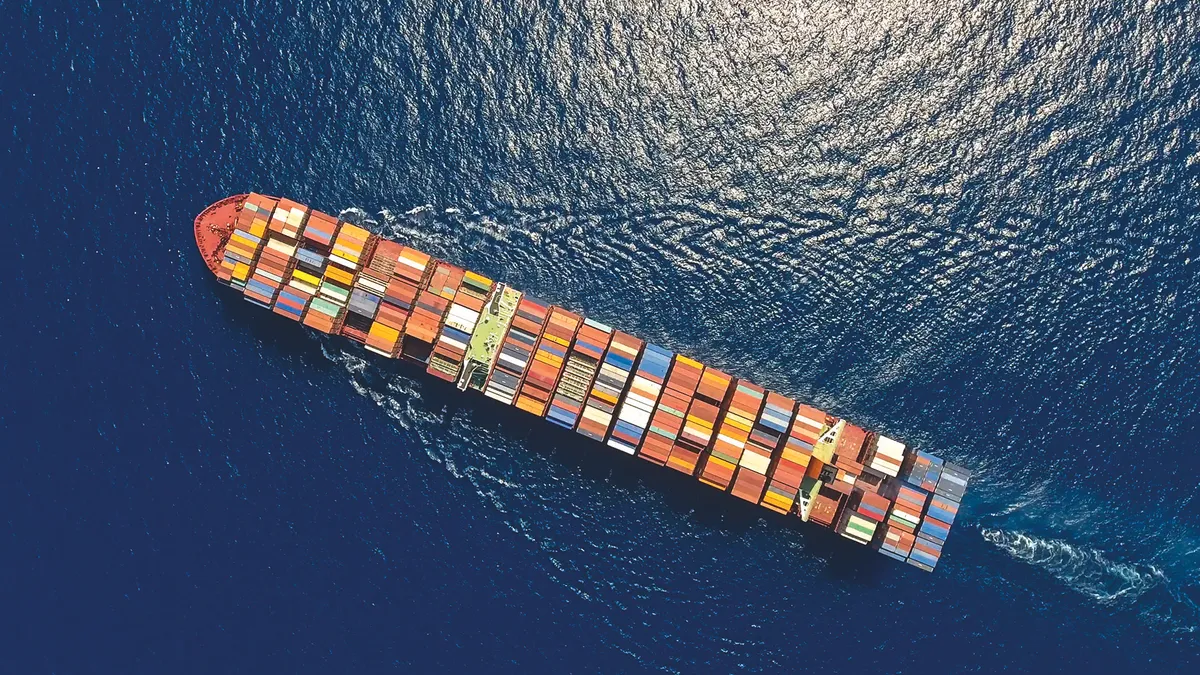Dive Brief:
- Demand for ocean shipping has maxed out carrier capacity for the foreseeable future, leading shippers to deal with an uptick in rolled cargo and carriers to turn away bookings for shipments out of Asia, according to Gene Graves, the executive director of United Shippers Alliance.
- Carriers keep pushing back the timeline for when they expect the situation to improve, Graves said. "At one time it was the end of October, then the end of November, and then December and now — and I think it's a good, conservative thing — they're saying that space won't free up and equipment won't get better until after Chinese New Year, which is the first part of February," he said.
- The maxing out of capacity has resulted in a plateauing of spot rates, but at highly elevated levels. Spot rates from China to the U.S. West Coast are currently nearly triple the same point last year, up more than 193% YoY, according to Freightos. Other trade lanes, though, have seen upticks in prices recently that has led the Drewry World Container Index to increase 12% in the last week, which represents a 138% YoY increase. Rates are expected to stay elevated in the coming week, Drewry said.
Dive Insight:
The logjam of containers traversing the Pacific Ocean has led to expensive rates for renting equipment and congestion at ports.
"A very acute problem right now, is a distinct lack of equipment at the right loading places," Sea-Intelligence noted in its Sunday Spotlight report. "And from an equipment perspective, all trades are equal."
Carriers are turning shippers to 20-foot containers because 40-foot containers are in shortage, Graves said.
"One of our carriers said they were 20,000 40-foot containers short from the bookings that they could secure," he said. "But they do have a lot of 20s, and so that's what's happening right now is members who can are switching over to using the 20s."
Demand for the smaller containers is reflected in rates. The price of 20-foot containers more than doubled between August and this week, according to Shanghai Shipping Exchange figures cited by The Wall Street Journal.
Rates for ocean shipping remain elevated as well, and high demand for ocean shipping has led to an uptick in rolled cargo. Carriers are adding capacity in an attempt to keep up, according to a report from Sea-Intelligence released this week.
Graves said the association's members have had to turn to non-vessel owning common carriers with contract minimums exceeding that of the United Shippers Alliance.
"I can't get space for our members," he said. "And they have to go to NVOs. And we're a nonprofit organization, so we need all the revenue we can find. So it gets a little frustrating."
OOCL and ONE have issued advisories alerting customers of "temporary suspension of cargo acceptance on some intra-China feeder services leading up to Chinese New Year," Lars Jensen, CEO and partner of SeaIntelligence Consulting, said in a LinkedIn post on Thursday. "The suspension does not cover main deep-sea vessels on direct services."
Graves is hopeful that the recently announced Federal Maritime Commission investigation into the ocean carrier alliances will lead to some needed changes, but it probably won't come soon enough to help with this season. He said he'd like to see the FMC put a lid on price increases.
"My comment was, well, it's about time the FMC got off their rear ends and did something," he said. "But by the time they investigate it, we're going to be past Chinese New Year, so that's, you know, a day late and a dollar short."














